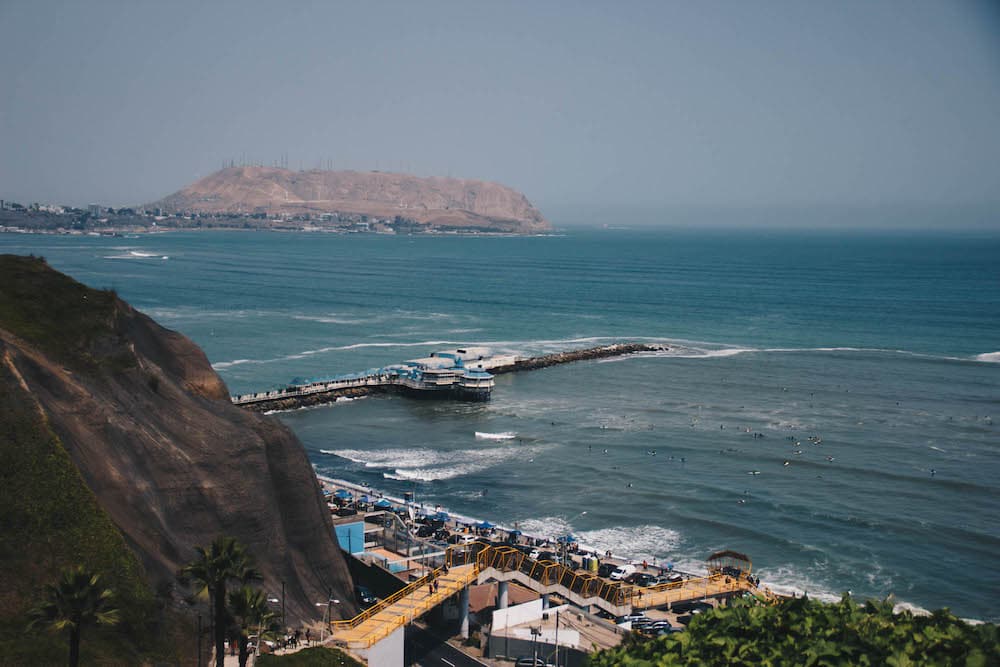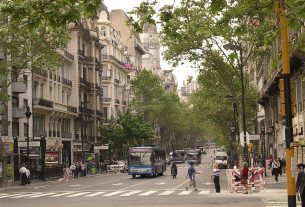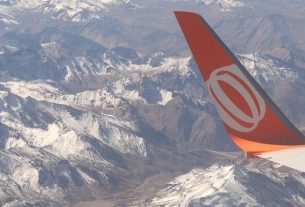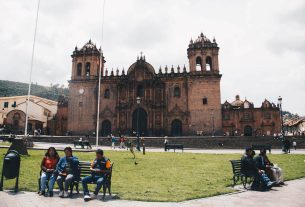I didn’t have many expectations about what to do in Lima, I confess. The entire trip to Peru was planned around a very clear objective: to reach the famous lost city of the Incas, the dreamed-of Machu Picchu. We had very little time and would waste two whole days on a bus heading to Cusco. Lima was on our itinerary solely and exclusively because we needed to disembark and embark there. Despite this, it was one of the most surprising places on the entire trip.
Before being the capital of Peru, Lima was the capital of the Spanish Empire in America and, before that, an important center of the Inca Empire. The past has left strong marks on the city, ranging from buildings with imposing colonial architecture to archaeological centers from the pre-Columbian era. Not to mention the good and cheap food. There, you can enjoy a complete meal, including juice, dessert and a dose of Pisco Sour for between R$10 and R$15 on the tourist menus.
See too: Where to stay in Lima: the best neighborhoods and hotels 6 travel itineraries around Peru
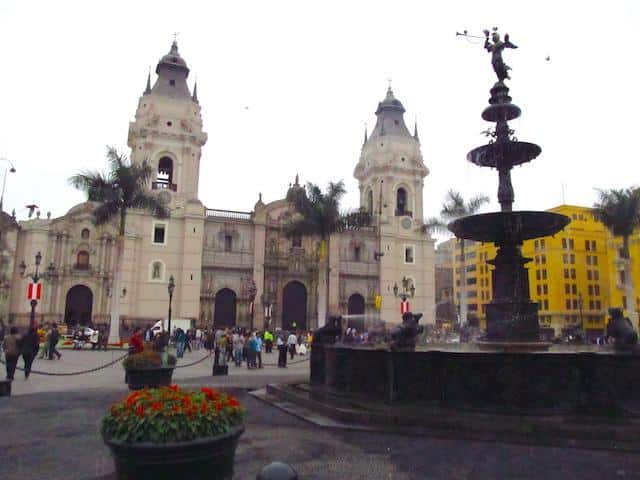
What to do in Lima
- Visit the historic buildings in the center
- Miraflores neighborhood
- Huaca Pucllana
- Free town
- National Museum of Archeology, Anthropology and History of Peru
- Museum of the Nation
- Huaca Hullamarca
- Pachacamac Sanctuary
Tour through the historic center of Lima
The historic center of Lima and its ancient and majestic buildings, worthy of the capital of an empire, are considered a Cultural Heritage of Humanity by UNESCO. Like any other Latin metropolis, Lima is a little chaotic. Despite this, it is possible to visit the entire central region of the city on foot. And don’t be intimidated by the negative comments you may read: this is the most interesting part of the city, a mix of everyday life in the capital with pure history. The historic center is the heart of the city, where people pass every day to work and where they gather for political demonstrations and religious celebrations.
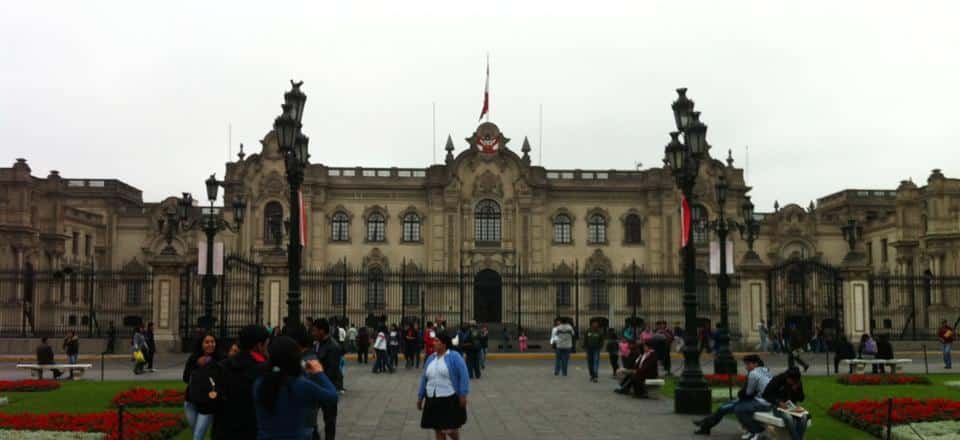
To get there, the most comfortable and quickest way is by taxi. If you choose this, remember to negotiate the price with the driver beforehand. There are also several buses that take you there, and you don’t need to be afraid to use public transport. It’s cheap and relatively safe. Just like in any other big city, keep an eye out for pickpockets, both on buses and on the busy streets in the center.
Start exploring the region from Main Square. This was the stage for some of the greatest events in Peru’s history, including the founding of the city in 1535. Surrounding it are the Government’s palacea Lima cathedralo Archbishop’s Palace and the Union Palace, all of them imposing and well-preserved buildings. The Cathedral has an official guided tour that costs 30 soles and also gives access to a guided tour of the Archbishop’s Palace. But with a guided tour or not, be sure to enter the church to see its beautiful interior. Guided tours of the Government Palace take place from Monday to Friday, from 10 to 11 am. To participate, you must make an appointment by email at palacio@comunidadperuana.com at least 48 hours in advance.
A Church of San Francisco It is an essential attraction. With 7 new soles you can take a guided tour of the church, which is also a convent, and the famous catatombs. Get ready to see lots of human bones and a huge library that looks like Hogwarts, full of old books, as well as many works of sacred art.
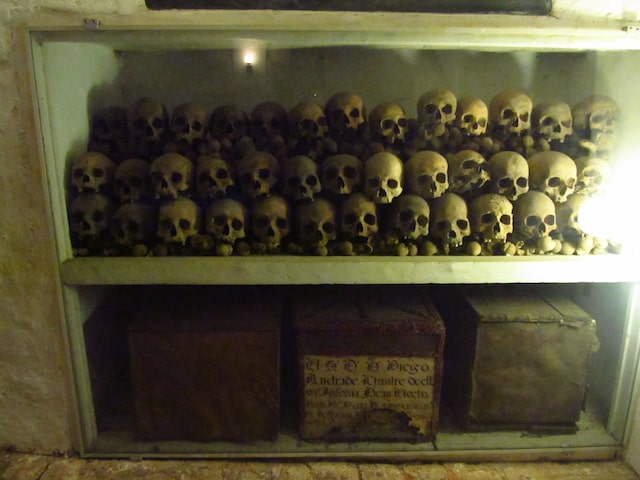
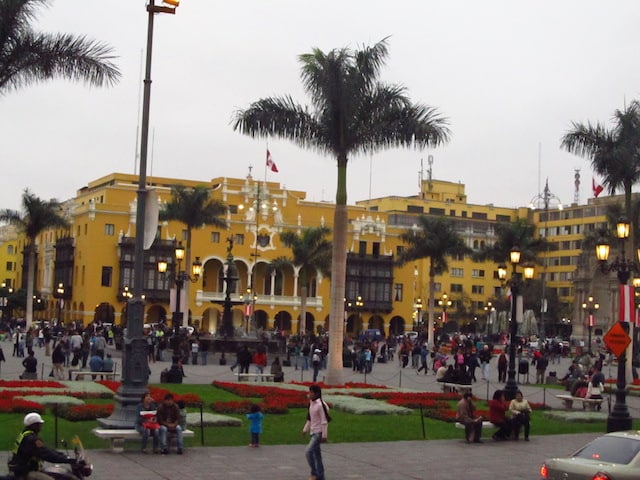
At lunch time, stop by the Santa Rosa Passage, a boardwalk with several cool restaurants. It’s worth walking through the alleys and checking out the dozens of churches and historic buildings there. The Peruvian people are very Catholic and the churches are always full at mass time.
From there, head to the Museum of the Inquisition. Keep an eye on the guided tour times, as the place is more interesting for historical explanations than for exhibitions, mostly made up of dolls and reenactments. Entry is free.
Tour of the Miraflores neighborhood: bars, restaurants and breathtaking views
Miraflores is the favorite neighborhood of many tourists and residents of Lima and also one of the best places to stay in the city. Modern and cool, it is full of bars and restaurants that are always busy. The Miraflores boardwalk is an attraction in itself. Spend some time walking around and enjoy the stunning views of Avenida Beira-Mar and the Pacific below. One of the best-known points on the boardwalk is the Love Park, an excellent place to enjoy the sunset. There is the statue The kissby Victor Delfín, and the benches are decorated with mosaics and famous phrases by Peruvian artists.
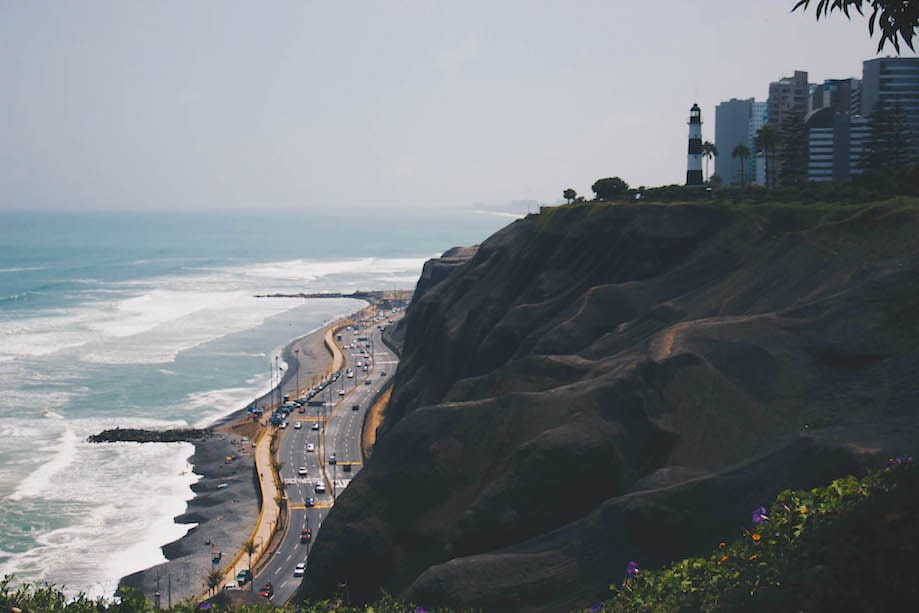
View of the Miraflores promenade in Lima
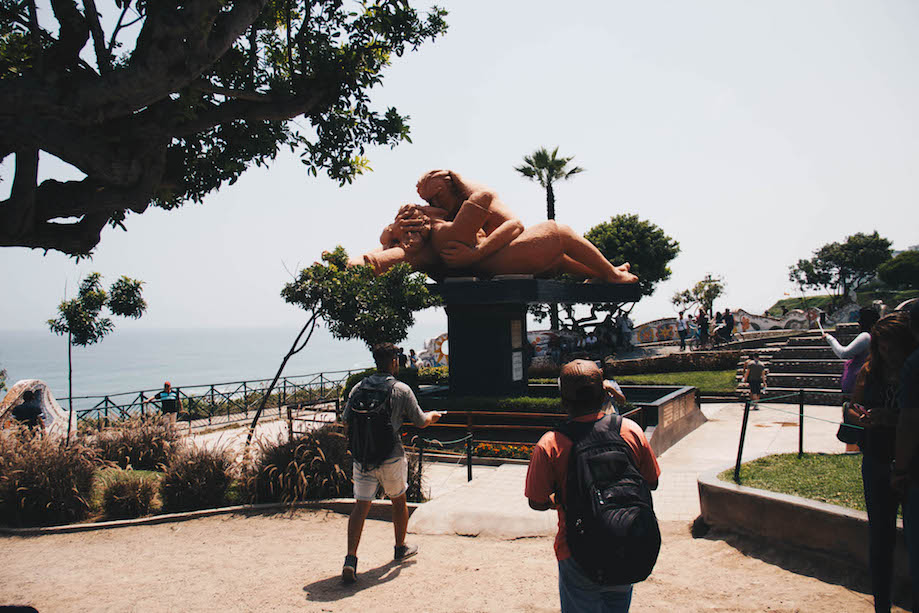
Statue The Kiss, by Victor Delfín
It is in Miraflores that there is also the Huaca Pucllana, the most important archaeological site in the city, which houses a pre-Inca pyramid. There, it is also possible to visit stalls with typical fruits from the country and local craft markets. Perfect for those who want to take souvenirs for the whole family.
Find hotels in Miraflores
The charming neighborhood of Pueblo Libre
Friendly colorful houses await you in the charming district of Pueblo Libre, in Lima. There, the tranquility of the streets is more like a village in the interior of the country than the ever-electric capital. This is also an excellent region to stay. Plaza Bolívar is the local center. Around it are small cafes, restaurants serving typical Peruvian food and the oldest pisco distilleries in the city, as well as the National Museum of Archeology, Anthropology and History of Peru (entrance 10 soles), one of the most important in Lima, which brings together artifacts, objects and documents that tell Peruvian history from prehistory to the recent past. If you pass by, be sure to have a pisco sour at Antigua Taberna de Queirolo, Very traditional bar in operation since 1880.
Find hotels in Pueblo Libre
Museum of the Nation
Located inside the Ministry of Culture building, the Museum of the Nation is recognized as the largest conservator of Peruvian art heritage. The collection has 15,500 works, most of them works from the pre-colonial era. There are articles made of metal, fabric and ceramics that also help to understand the greatness of these civilizations. There are also wings for art from the colonial and republican periods. It is located at Av. Javier Prado Este 2465, in the San Borja district. It is open from Tuesday to Sunday, from 9am to 5pm and entry is free.
Huaca Hullamarca: an archaeological site among modern buildings
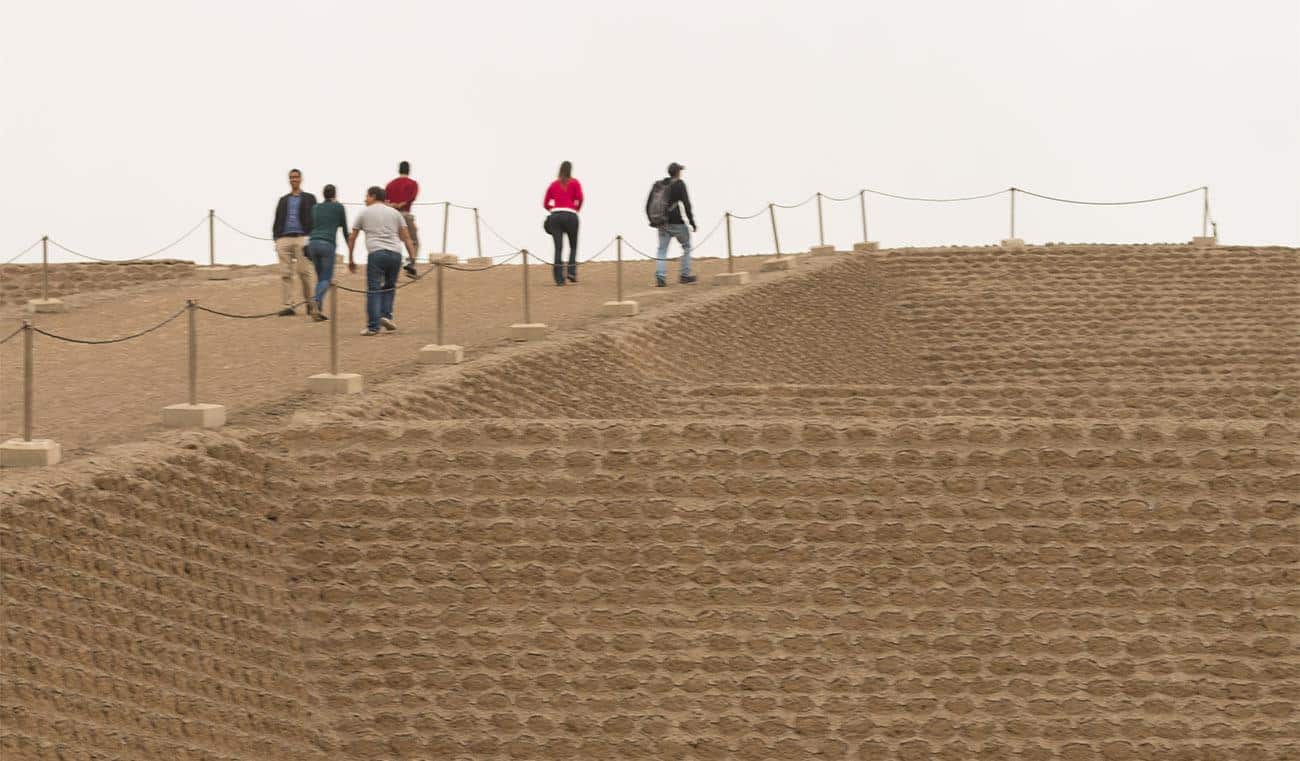 Another pre-Columbian, pre-Inca and pre-Lima pyramid, Huaca Huallamarca (official website) is not as well-known as its sister Huaca Pucllana, but it is an important archaeological remains of one of the main places of worship of the Pinazo, a people who inhabited this part of South America from the 1st century BC. Entrance costs 5 soles and allows you to climb to the top of the pyramid. The place impresses with its grandeur, but mainly because it makes it clear how a metropolis of 8 million inhabitants developed around a place that had already been sacred for two millennia. See our full post about the visit and history of Huaca Hullamarca.
Another pre-Columbian, pre-Inca and pre-Lima pyramid, Huaca Huallamarca (official website) is not as well-known as its sister Huaca Pucllana, but it is an important archaeological remains of one of the main places of worship of the Pinazo, a people who inhabited this part of South America from the 1st century BC. Entrance costs 5 soles and allows you to climb to the top of the pyramid. The place impresses with its grandeur, but mainly because it makes it clear how a metropolis of 8 million inhabitants developed around a place that had already been sacred for two millennia. See our full post about the visit and history of Huaca Hullamarca.
Pachacamac Sanctuary
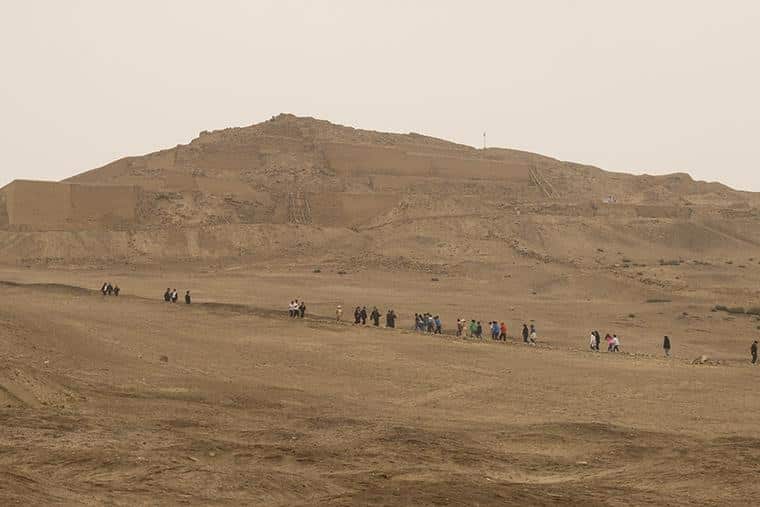 Located 40 kilometers from Lima, the Sanctuary of Pachacamac dates back to two centuries before Christ and was an important religious center of the Lima, Wari, Yshma civilizations and, at the end of the 15th century, the Incas. But don’t expect to find beautiful ruins like Machu Picchu. There is a lot of dust, dirt and 16 pyramids without a top, built at different times, between 900 and 1533 AD, each with its own function (administrative, religious or residential). The visit includes access to an archaeological museum with 300 pieces that tell a little about the pre-Columbian history of the region. It’s worth visiting to understand the history of Pachacamac and make the most of your visit. To get to the Pachacamac Sanctuary you need to rent a car or book a half-day tour with a local agency for around 30 dollars. The Sanctuary is open from Tuesday to Sunday, from 10am to 5pm. On Sundays the place closes an hour earlier. Entrance costs 10 soles (it is included in the price of the agency’s tours). See our full post about the visit and history of the Pachacamac Sanctuary.
Located 40 kilometers from Lima, the Sanctuary of Pachacamac dates back to two centuries before Christ and was an important religious center of the Lima, Wari, Yshma civilizations and, at the end of the 15th century, the Incas. But don’t expect to find beautiful ruins like Machu Picchu. There is a lot of dust, dirt and 16 pyramids without a top, built at different times, between 900 and 1533 AD, each with its own function (administrative, religious or residential). The visit includes access to an archaeological museum with 300 pieces that tell a little about the pre-Columbian history of the region. It’s worth visiting to understand the history of Pachacamac and make the most of your visit. To get to the Pachacamac Sanctuary you need to rent a car or book a half-day tour with a local agency for around 30 dollars. The Sanctuary is open from Tuesday to Sunday, from 10am to 5pm. On Sundays the place closes an hour earlier. Entrance costs 10 soles (it is included in the price of the agency’s tours). See our full post about the visit and history of the Pachacamac Sanctuary.
Sign up for our newsletter

Sign up for our newsletter and stay up to date with exclusive news
that can transform your routine!
Warning: Undefined array key "title" in /home/storelat/public_html/wp-content/plugins/link-whisper-premium/templates/frontend/related-posts.php on line 12
Warning: Undefined array key "title_tag" in /home/storelat/public_html/wp-content/plugins/link-whisper-premium/templates/frontend/related-posts.php on line 13

